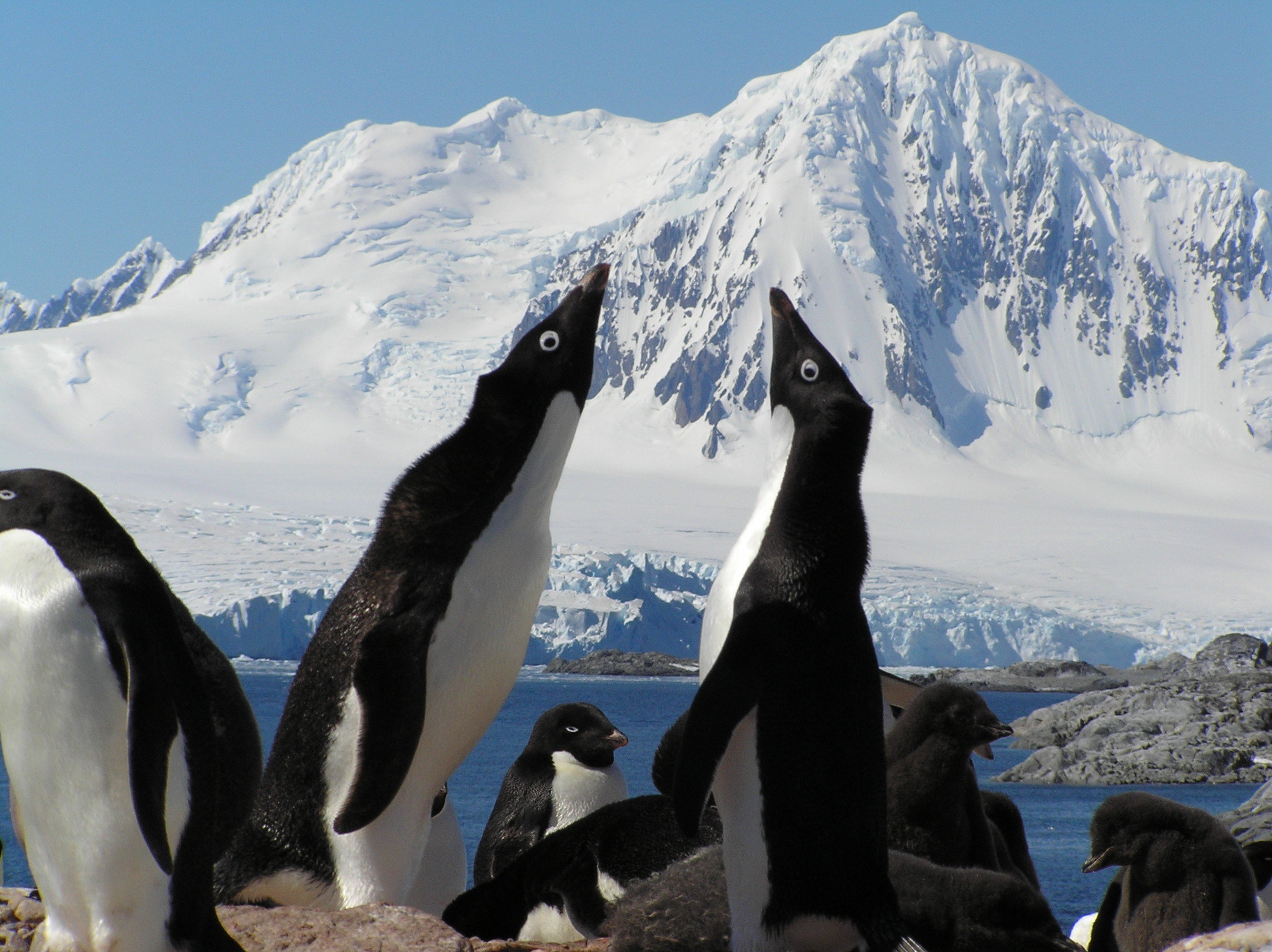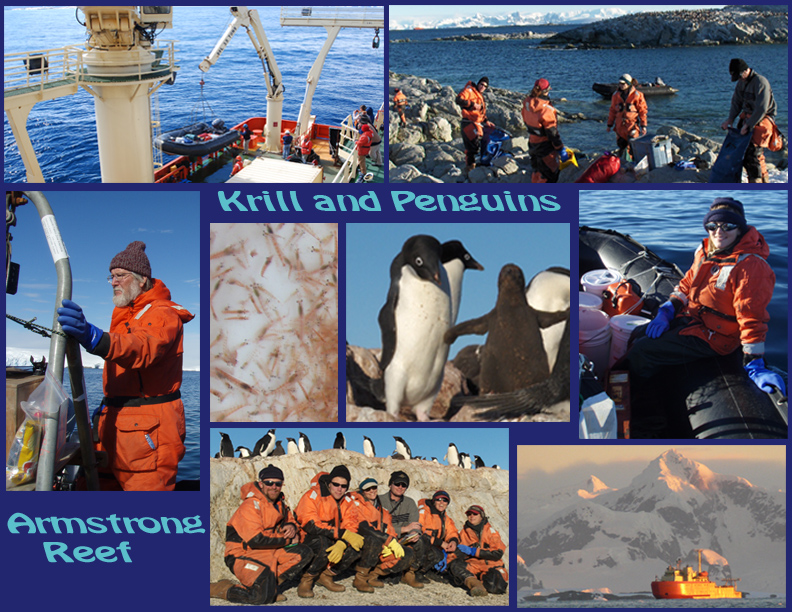Penguins & Krill
Hello from the Frozen South!
Though we are currently around 200 km off shore, a few days ago we had a beautiful day to bob inshore and drop two Zodiacs in the water. The bird ecology crew was off first with a team of folks headed for the Armstrong Reef islands where Adélie penguins maintain breeding colonies. Meanwhile, our zooplankton ecologists zoomed through the reef waters in search of krill using sonar coupled with a trawl net.
The primary focus of the seabird work on these islands is the Adélie penguin (Pygoscelis adeliae) foraging ecology as relates to breeding success. Seven of the islands in this group have been surveyed for the last 5 years, including a census of breeding adults and chicks.

Young male Adélie penguins compete with each other for female attention.
Though the Zodiac is securely tied to the shoreline, the best practice is to make sure all the survival gear comes ashore with the group. Each pair of adult Adélie penguins lays two eggs in early November and will try to raise two chicks. Variability in breeding success is due to direct physical factors, such as annual snow fall and/or winter sea ice extent and duration, which also tie into biological factors such as food availability (fish and krill). The second portion of this study involves examining the penguin diets in this area. We generally find the nutrition of these Adélies dominated by Antarctic krill (Euphausia superba).

At top left, Raytheon Polar Services crew crane the Zodiac off the L. M. Gould. At bottom left, Langdon Quetin, a principle investigator for the krill group, steers the krill rig. At top right, the bird group sets up for census and diet work on one of the islands. At center far right, Whitney Wilkinson prepares to process the krill haul. To her left, an adult Adélie penguin looks on at a gray Adélie chick. At bottom middle, the birders pose for a picture near a cliffside Adélie colony at the end of the day, while at bottom right, both small boats head back to be loaded onto the LMG by the low light of a midnight sunset.
Our zooplankton folk spent the day looking for schools of krill between the islands of the Armstrong Reef. This study also examines foraging ecology, but the foraging or grazing of krill. Just like cows graze grass, krill graze phytoplankton and ecologists examine the ingestion rates of these animals using grazing experiments. Early in the day, the only animals to be found were too small for experiments. However, the payload run arrived the last attempt of the day, thus our krillers were successful in their ventures.

 No comments
No comments 






